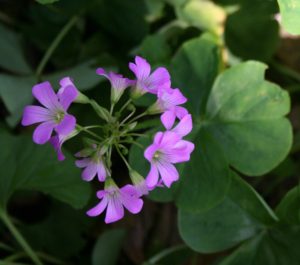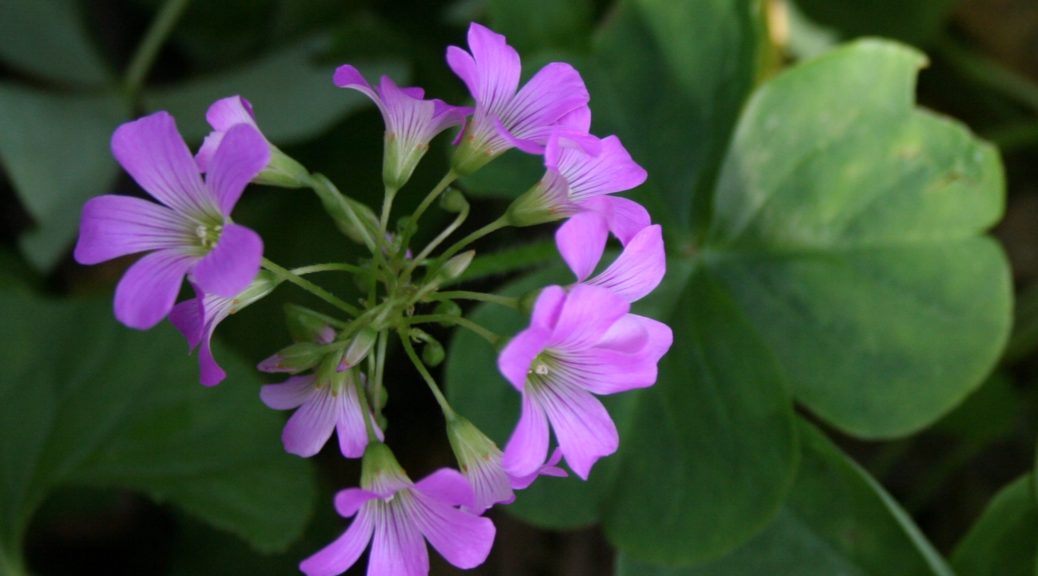by Jennifer Odom
The tiny pink flowers grabbed my attention as far back as age six. I’d tramp up Grandma’s back steps, and admire them over the handrail in their battered tin pot. The plant and pot together were no bigger than one of Grandma’s hens. 
Their blooms clustered like dainty goblets among the triple-heart-shaped leaves.
But why keep them in a pot? I guessed she didn’t want the small half-inch blooms and delicate leaves swallowed up among her ornamentals.
When she passed away I inherited the little pot. But many years passed before I realized the true purpose of the container.
Oxalis debilis, known as pink woodsorrel, or oxalis, has leaves that resemble a four-leaf clover. The leaves, flowers, and stems are edible and have a tart, lemony flavor. The roots taste nutty. But their oxalic acid content (also present in spinach, broccoli, grapefruit, and rhubarb) could be harmful in large amounts, especially for those inclined toward kidney stones and calcium deficiencies (2).
Why contain them in a pot?
According to Mark Bailey, Marion County UF/IFAS Extension Agent, despite being called a lucky clover, oxalis is a persistent weed and is “more likely to bring on a headache rather than luck.”
“Once established,” he said, “pink oxalis can easily spread without aggressive control and preventive measures.” Though similar to yellow oxalis, which grows from rhizomes, he said, “pink oxalis grows from a small bulb. From this bulb additional tiny bulbils emerge and easily break off when the plant is pulled up. And these, even when deeply buried, can form a new plant.”
grows from a small bulb. From this bulb additional tiny bulbils emerge and easily break off when the plant is pulled up. And these, even when deeply buried, can form a new plant.”
Along the way, the pretty weed showed up in my own garden and quickly lost its charm for me. The more oxalis I pulled, the more it multiplied…seemingly overnight. My small problem quickly escalated and little heart-shaped leaves erupted everywhere, even between the roots of my ornamental plants.
Rototilling exacerbated the problem.
The solution?
Well, I heard that pigs like oxalis bulbs, but soon gave up on the “rent-a-pig” idea.
And now the weed was too widespread to utilize a sifting device.
Looking back I should have applied weed killer at the beginning, or simply dug deep and sifted out the bulbils when they first appeared.
According to University of Florida’s IFAS publication 1253, shallow mulching can suppress germination. The publication adds, “There are many different postemergence herbicides…but most have to be applied as a directed application,” and mentions the use of glyphosate, glufosinate, diquat, or pelargonic acid. A warning: read manufacturers’ labels and follow precautions. I tried a few with good success.
But what about oxalis that sprouts at the base of ornamentals? Pull those by hand and keep after them.
Amazingly, this same persistent weed is sold in stores, usually around St. Patrick’s day.
So, if you must buy oxalis, at least be wise like Grandma.
Keep your friends close, and your enemies even closer.
And this enemy belongs in a pot.

